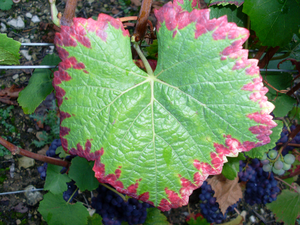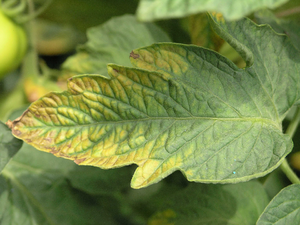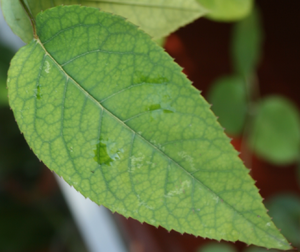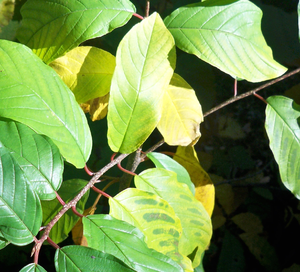Plant Deficiency Disease
Contents
Key Stage 4
Meaning
Plant deficiency diseases are diseases in plants caused by a lack of certain minerals.
About Plant Deficiency Diseases
- Plants gain minerals from the soil, so when the soil lacks certain minerals the plant can become ill.
- The three minerals most essential to a plants growth are Nitrates, Phosphates, Potassium, Manganese and Magnesium
Nitrate Deficiency
With a Nitrate deficiency the upper leaves grow light green and lower leaves are yellow and begin to shrivel.
Phosphate Deficiency
With a Phosphate deficiency the leaves grow dark and are regularly lost. Often the younger leaves are purple.

|
| With a Phosphate deficiency the leaves grow dark and are regularly lost. Often the younger leaves are purple. |
Potassium Deficiency

|
| With a Potassium deficiency the tips and edges of young leaves are yellow. Over time more yellow patches or dead areas appear on the leaves. |
Manganese Deficiency

|
| With a Manganese deficiency yellow spots and holes appear between the plant veins. |
Magnesium Deficiency

|
| With a Magnesium deficiency the lower leaves develop a yellow area which grows from the tips of the leaves spreading over the whole leaf while the veins remain green. |